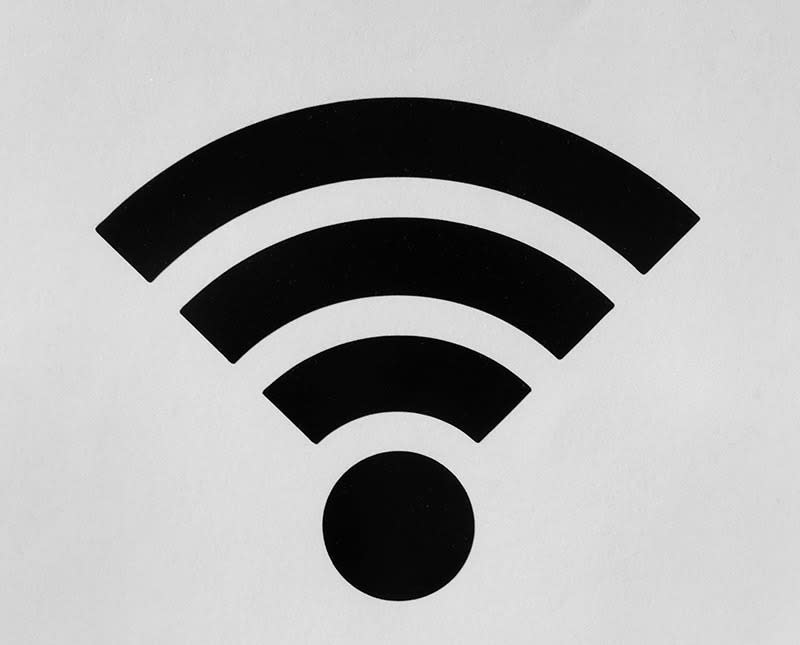Experts Say ‘Wi-Fi Allergy’ Isn't Real — But The Symptoms Can Be

(Photo: Getty Images)
Jenny Fry was only 15 when she took her own life. In a note she wrote shortly before she was found hanging from a tree near her home, she wrote, “I am insignificant, an insignificant number on someone’s screen and so is my life, a tiny blip in the whole existence of the universe … I find it hard to be hopeful when I can hardly enjoy anything anymore.”
Jenny suffered from a bizarre set of symptoms, including headaches, fatigue, and bladder problems. Her mother, Debra, claimed they were the result of an “allergy to Wi-Fi”: “Jenny was getting ill and so was I,” she told The Mirror. “I did some research and found how dangerous Wi-Fi could be so I had it taken out of the house… Both Jenny and I were fine at home but Jenny continued to be ill at school in certain areas.”

Jenny Fry (Photo: Facebook)
In an increasingly digital world, the thought that one can get sick from the slight electromagnetic fields produced by computers, power lines, and even wireless routers is terrifying. And it’s no mystery where the idea comes from: Higher doses of the same kinds of fields — radiation — can have severe effects on the body.
But doctors have a different name for so-called “allergies to Wi-Fi”: idiopathic environmental intolerance attributed to electromagnetic fields, or IEI-EMF for short. Idiopathic is the medical term that means “of unknown cause,” for while sufferers believe that WiFi and other electromagnetic fields are to blame, decades of medical research has failed to find any connection between them and the myriad of symptoms experienced.
“Calling it electrosensitivity or electromagnetic hypersensitivity presupposes that electromagnetic fields are causing the condition,” James Rubin, PhD, a scientist and lecturer in the Department of Psychological Medicine at King’s College London, tells Yahoo Health. “But actually, the science on that is pretty conclusive that it’s not electromagnetic fields.”
The symptoms experienced by IEI-EMF sufferers are all too real. According to the World Health Organization, the most common complaints are of fatigue, tiredness, concentration difficulties, dizziness, nausea, heart palpitations, digestive disturbances, and skin redness, tingling, and burning sensations. Sufferers are adamant that their symptoms, which can range from annoying to debilitating, are caused by electromagnetic fields.
But if that were the case, then it should be fairly simple for scientists to demonstrate the connection between EMF and symptoms. Instead, in controlled settings where both the researcher and the subject are “blind” to the treatment being given, sufferers are unable to tell when they’re in the presence of such fields.
“There are over 50 studies conducted by different research teams around the world,” says Rubin, who has written in-depth reviews on the topic, “and in these experiments, people do get the symptoms they experience in real life. But the important thing is they get them just as much in the sham condition.”
Related: 5 Things Someone With Chronic Pain Wishes You’d Know
So, he goes on, “it seems to be less to do with exposure to electrical fields, and more to do with believing you’ve been exposed.”
It’s a phenomenon scientists refer to as the nocebo effect — the very real experience of harm from something due solely to the perception that it is harmful. Studies have shown, for example, that watching a media report warning about the dangers of EMF can induce symptoms in people who believe they’re in the presence of Wi-Fi (even if they’re not).
However, that doesn’t mean that the condition is purely psychological. Other studies have shown that people with IEI-EMF experience symptoms before they learn of the supposed dangers of WiFi. So while the nocebo effect could exacerbate their complaints, it wouldn’t be the root cause.
But if electromagnetic fields are not to blame, then what?
“If you talk to people with electrosensitivity,” Rubin notes, “it’s very different between different people, and the only connection sometimes is that they’re attributing it to electromagnetic fields.” Rubin says the lack of a distinct syndrome, or set of symptoms that universally occur, means it’s likely many illnesses. “It doesn’t hold that there must be a single explanation that accounts for everything that everyone is experiencing.”
Studies suggest as many as one in three IEI-EMF sufferers have an undiagnosed or misdiagnosed medical condition that accounts for their symptoms, says Rubin. Thus, anyone who thinks they may be allergic to Wi-Fi should first and foremost talk to their doctor and be tested for other potential causes.
Related: Woman Wins Disability Payout for WiFi ‘Sensitivity’
Still, two-thirds or more of IEI-EMF sufferers experience symptoms that remain unexplained. They may be experiencing a nocebo condition, or they may have an environmental “allergy” or symptom trigger that remains elusive. They may even suffer from a yet-to-be discovered disease. In the majority of cases, then, treatment is uncertain. There have only been a couple handfuls of studies that have looked at what treatments work in IEI-EMF patients.
The most obvious — limiting exposure to electromagnetic fields, as Jenny’s mother did, by getting rid of Wi-Fi routers, microwaves, and other emitting devices — doesn’t really work. Sometimes believing that exposure to EMF is reduced (though not actually reducing EMF exposures) provides some relief, but only through the placebo effect. The problem is, placebos don’t actually treat the underlying condition, which means that symptoms can persist or reappear until the root cause is determined. Cognitive behavioral therapy, a kind of therapy that involves talking through symptoms with a sympathetic, non-judgmental doctor, also seems to have a positive effect, but studies on it are limited.
One thing is for certain: More research is needed to find a way to help those with IEI-EMF. While the belief that electromagnetic fields are to blame for Jenny’s condition may not be grounded in science, the headaches, fatigue, and bladder problems she experienced — which likely contributed to her ending her life — are anything but imaginary. “The symptoms that people are reporting are definitely real, definitely physical symptoms that cause an awful lot of distress,” says Rubin. “The debate isn’t whether people have symptoms or not; they definitely, definitely, do.”
WATCH: French Court Recognizes Woman’s Allergy to Wi-Fi as Disability:
Read This Next: Why Your Pain Being All in Your Brain Isn’t a Bad Thing
Let’s keep in touch! Follow Yahoo Health on Facebook, Twitter, Instagram, and Pinterest.

